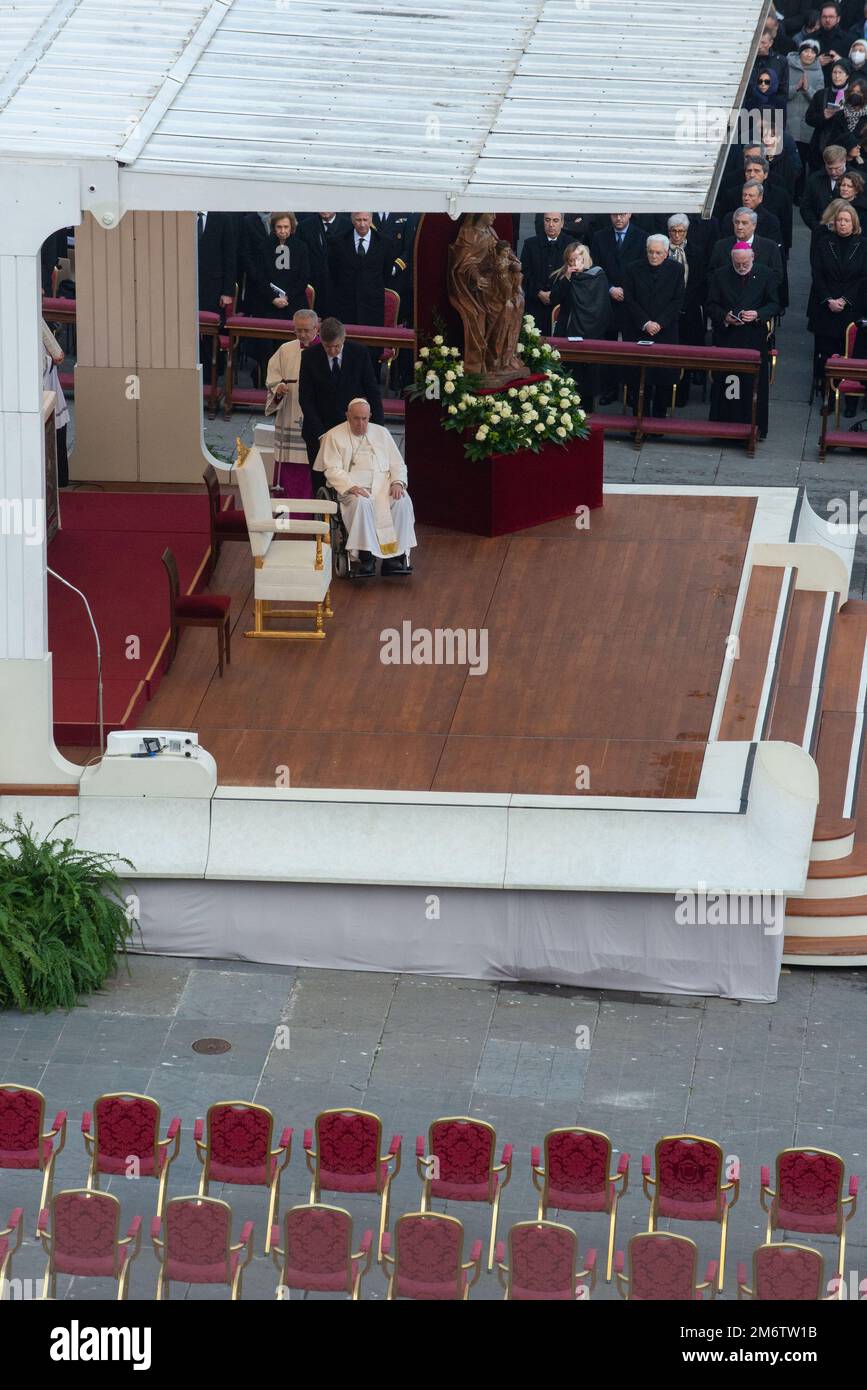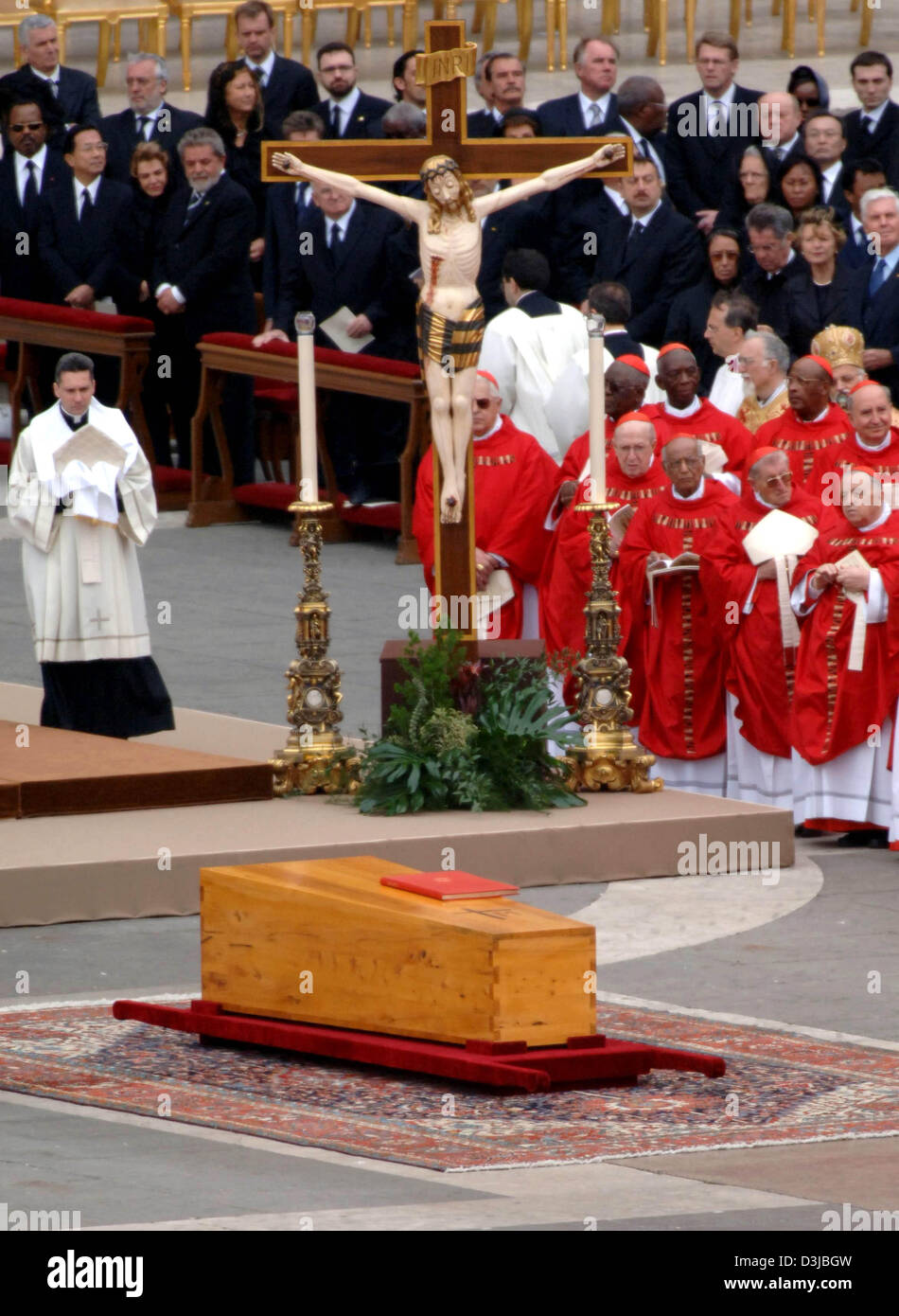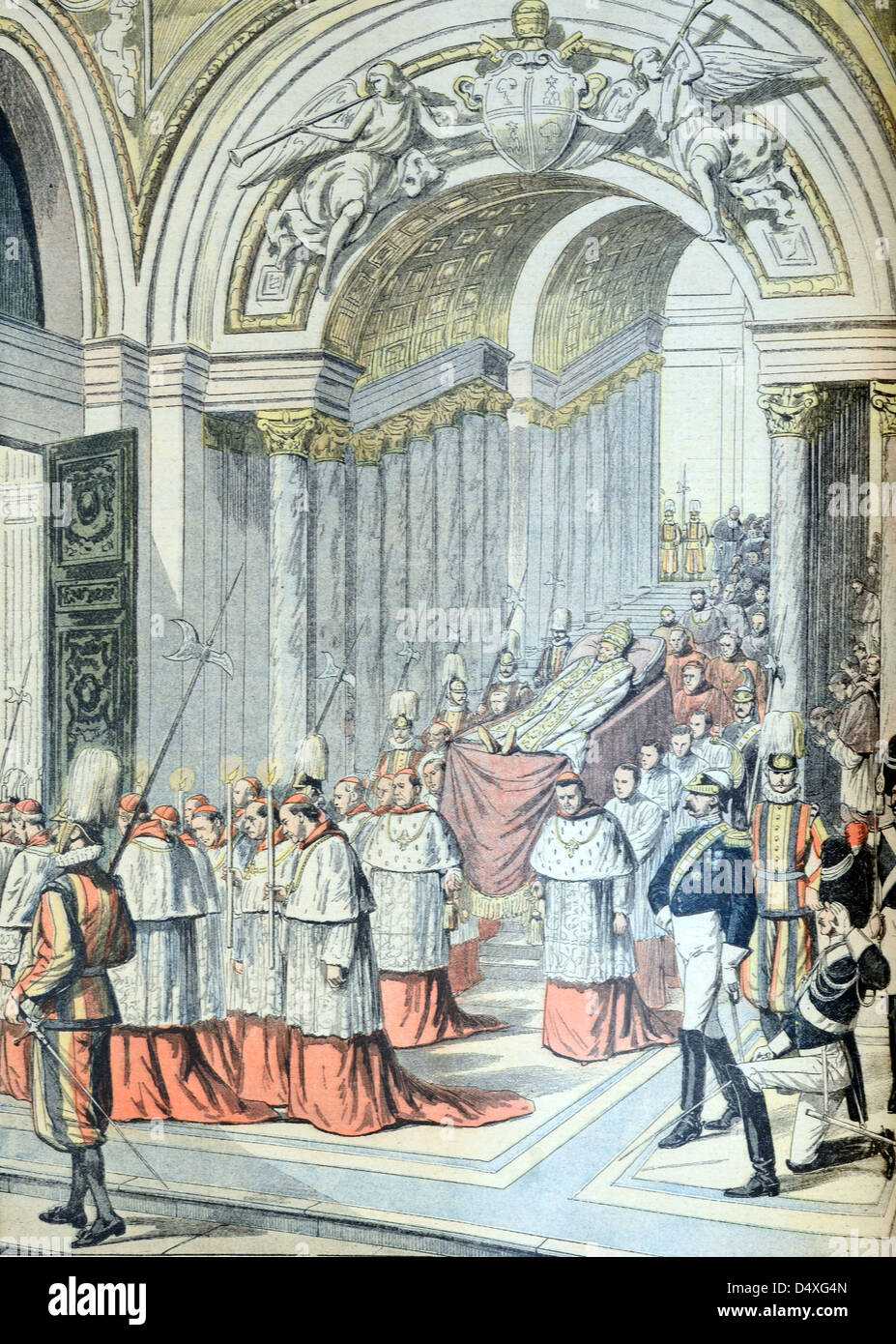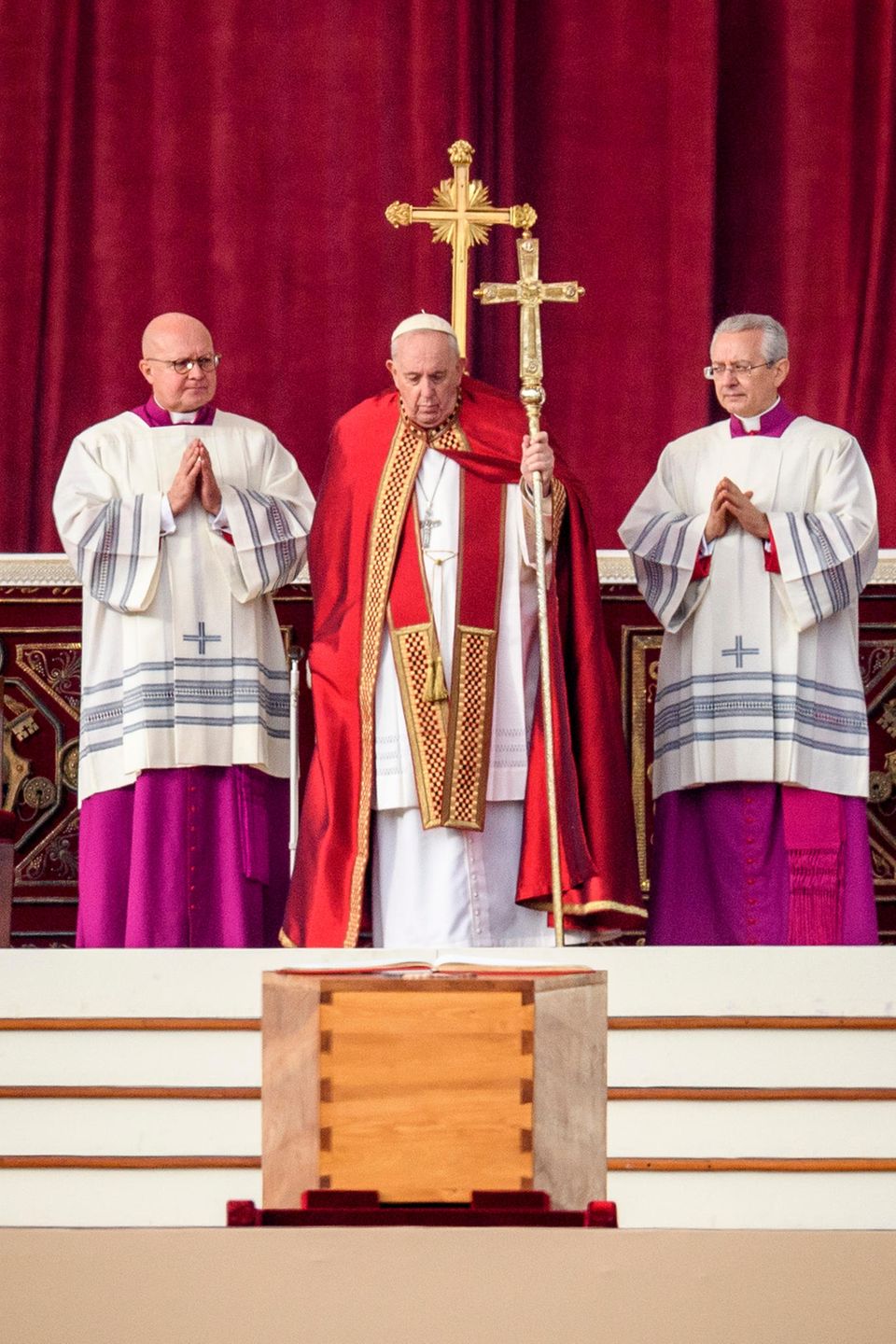Will the world witness a final, poignant farewell to a pontiff whose papacy was marked by both profound reforms and enduring controversies? The Papal funeral, a solemn ritual steeped in centuries of tradition, promises to be a global spectacle, drawing millions to Rome and capturing the attention of billions worldwide.
The death of a Pope invariably triggers a period of intense mourning and ceremonial preparation, culminating in a meticulously orchestrated funeral. This event is not merely a religious observance; it is a display of the Catholic Church's global presence and an opportunity for the faithful to unite in grief and remembrance. The rituals surrounding the Papal funeral are steeped in history, reflecting a complex tapestry of faith, tradition, and political significance. From the precise choreography of the ceremonies to the symbolic weight of each gesture, the funeral is a carefully constructed performance that serves to reaffirm the Church's enduring power and its message of hope and continuity.
The funeral of Pope Francis, the Argentine pontiff whose tenure was defined by a progressive agenda and a dedication to the poor, presents a unique opportunity to reflect on his legacy. His pontificate was characterized by efforts to modernize the Church, promote social justice, and address issues of climate change. The ceremonies surrounding his death and burial are sure to reflect these themes. The event offers a chance to assess the impact of his reforms and to ponder the direction of the Catholic Church in the 21st century.
The mechanics of the Papal funeral are governed by centuries-old protocols, codified in the Roman Missal and other liturgical texts. These protocols are precise, dictating every aspect of the funeral, from the initial announcement of the Pope's death to the final placement of his remains in the Vatican grottoes. The funeral's structure is designed to create a sense of order and solemnity, emphasizing the Church's authority and the continuity of its mission. While there may be some adaptations reflecting the specific Pope’s wishes or current times, the core of the ritual remains the same, reinforcing the timeless nature of the institution.
The events leading up to the funeral began with the official announcement of the Pope's passing, which, in this case, occurred on Easter Monday at 7:35 am, at the age of 88. Following the death, the body is traditionally prepared for public viewing. This involves specific procedures that adhere to the Church's veneration of the body, a vessel of the soul. Once prepared, the body is placed in state, first in the Apostolic Palace and then in St. Peter’s Basilica, allowing the faithful to pay their respects. During this time, high-ranking Church officials will undertake the formal Interregnum, the period between the death of a Pope and the election of a new one. This phase is marked by specific administrative duties, including the organization of the funeral and the preparation for the upcoming Conclave, where the new Pope will be elected.
The funeral itself is a complex series of liturgical acts, each with its own theological and historical significance. The ceremony is led by the College of Cardinals, the body of high-ranking prelates who advise the Pope and elect his successor. The funeral Mass is celebrated in St. Peter's Square, the vast public space that serves as the heart of Vatican City. The Mass incorporates prayers, readings, and hymns, all chosen to celebrate the life of the deceased Pope, as well as to offer solace and hope to the mourners.
A central feature of the funeral Mass is the homily, a sermon delivered by a high-ranking Cardinal that reflects on the Pope's life, work, and legacy. The homily provides an opportunity to celebrate the deceased's achievements and to articulate the Church's vision for the future. It is a critical moment in the funeral, allowing the Church to connect with the faithful and to reinforce its values. The homily's tone and content are carefully chosen to reflect the character of the deceased Pope and the mood of the mourners.
Following the Mass, the Pope's remains are entombed. The specific location of the tomb depends on the wishes of the deceased and the customs of the Church. The traditional location is the Vatican grottoes, a subterranean complex beneath St. Peter's Basilica, where many other Popes are buried. This placement links the deceased Pope to his predecessors and symbolizes the continuity of the Papacy. The final interment is a solemn moment, marking the end of the funeral ceremonies and the beginning of the period of mourning for the faithful.
The funeral of Pope Francis would undoubtedly draw an extraordinary crowd to Rome. The Vatican City is a small enclave, and the influx of dignitaries, religious figures, and pilgrims poses significant logistical and security challenges. The city authorities must coordinate transport, accommodation, and security for hundreds of thousands of people, ensuring the safety and dignity of the proceedings. The presence of heads of state and other high-ranking officials from around the world adds a layer of complexity. The Vatican, along with Italian authorities, would need to put in place stringent security measures, including road closures, surveillance, and the deployment of security personnel. The impact of such an event on the local economy is also significant, with hotels, restaurants, and other businesses experiencing a surge in demand.
Media coverage of the Papal funeral is vast and extensive, with media outlets worldwide dedicating significant resources to the event. Live broadcasts, news reports, and social media updates provide round-the-clock coverage, ensuring that the world can witness the ceremonies in real-time. The funeral becomes a global news event, generating widespread public interest and discussion. The images and videos of the funeral are also used to create documentaries and historical accounts, ensuring that the event is documented for future generations. The coverage also provides an opportunity for the Church to communicate its message and to reaffirm its global presence.
The impact of the Papal funeral goes beyond the immediate period of mourning. The event can also have a lasting impact on the Catholic Church's standing in the world. The funeral provides an opportunity for the Church to showcase its values, to connect with the faithful, and to promote its message of hope and peace. The event can influence public opinion, help shape the future of the Church, and play a role in the selection of the next Pope. The funeral serves as a reminder of the enduring power and influence of the Catholic Church in the 21st century.
In the case of Pope Francis, the world will be looking to reflect on the choices he made as the head of the church. His actions and policies as the pontiff, from his focus on social justice to his efforts to combat climate change, will be re-examined and discussed at length during the funeral and in the aftermath. The event would offer an opportunity to assess his legacy and to consider the future of the Church under his successor.
The final farewell to Pope Francis is a moment of great significance, one that will resonate with Catholics and non-Catholics across the world. It is a culmination of the traditional rituals and practices of the Church and a reflection of its place in contemporary society. The world will watch, remembering a pontiff whose life and work left an indelible mark on the Church and the world.
| Bio Data and Personal Information | Details |
|---|---|
| Full Name | Jorge Mario Bergoglio |
| Born | December 17, 1936, in Buenos Aires, Argentina |
| Died | (Hypothetical, but based on news) Easter Monday, at 7:35 am |
| Age | 88 (at the time of hypothetical death) |
| Nationality | Argentine (became a citizen of Vatican City) |
| Career and Professional Information | Details |
|---|---|
| Ordained as a Priest | December 13, 1969 |
| Ordained as a Bishop | June 27, 1992 |
| Archbishop of Buenos Aires | 1998 - 2013 |
| Created Cardinal | February 21, 2001, by Pope John Paul II |
| Elected Pope | March 13, 2013 |
| Pontificate | 2013 – hypothetical date of death |
| Key Aspects of Papacy | Details |
|---|---|
| Known For | Emphasis on mercy, compassion, and social justice; focus on the poor and marginalized; reform of the Curia; efforts to address climate change. |
| Notable Actions |
|
For more information, please refer to: Vatican Official Website.




